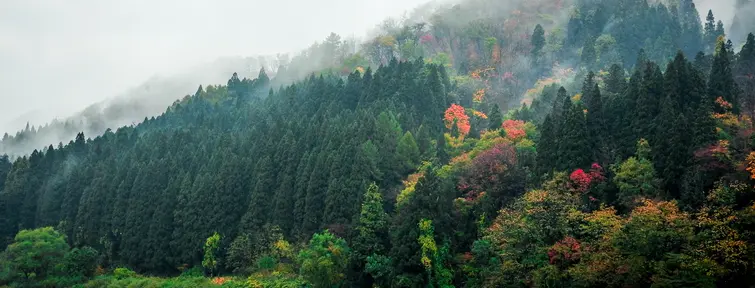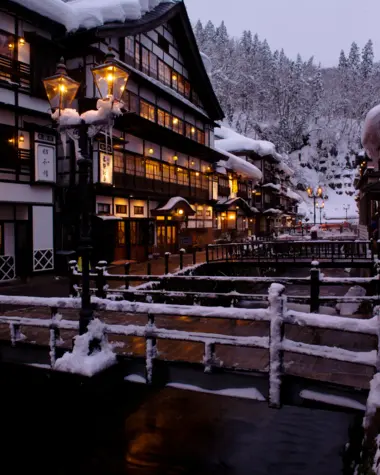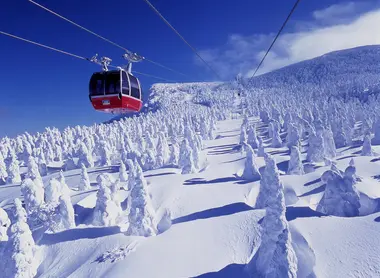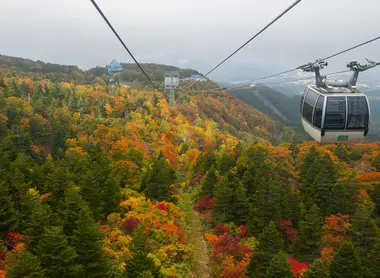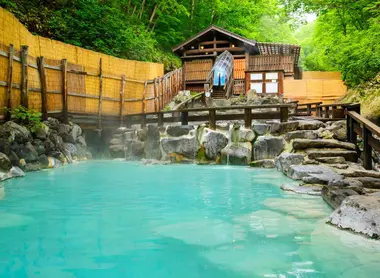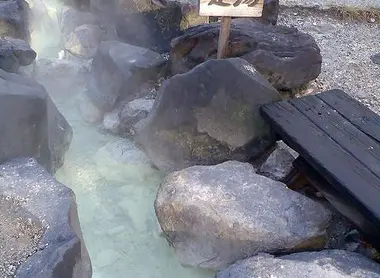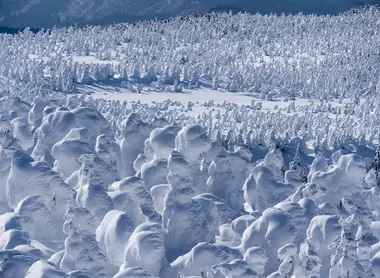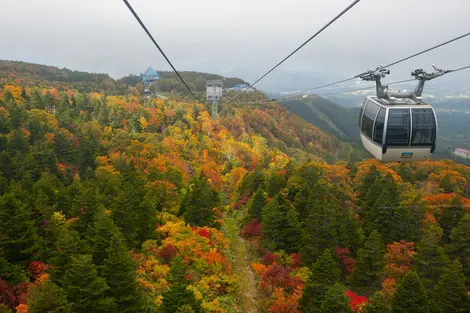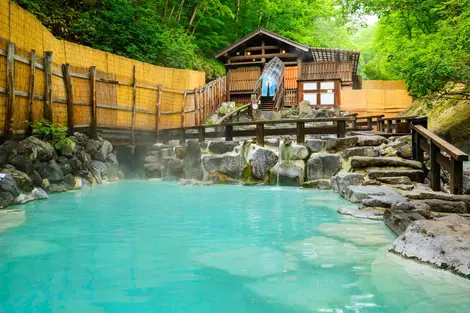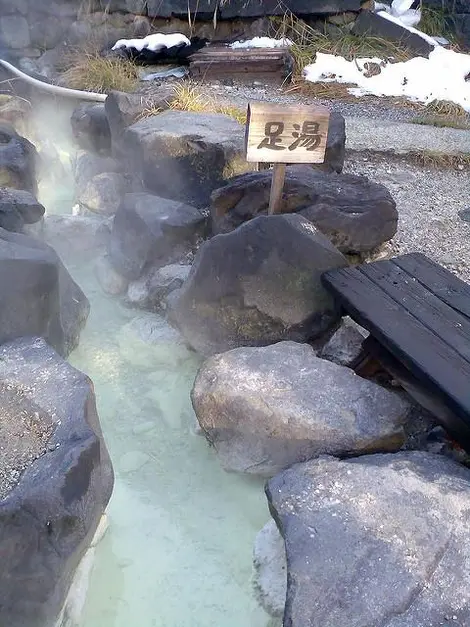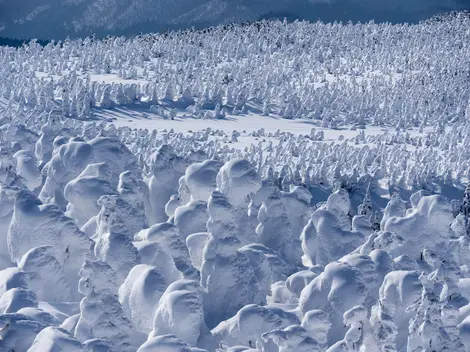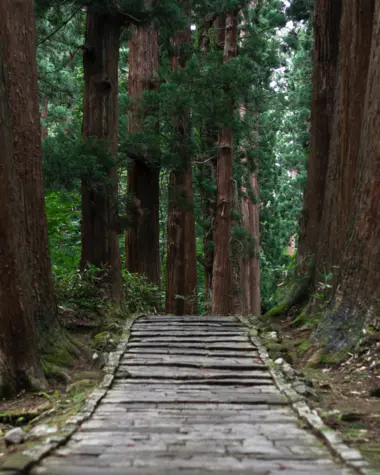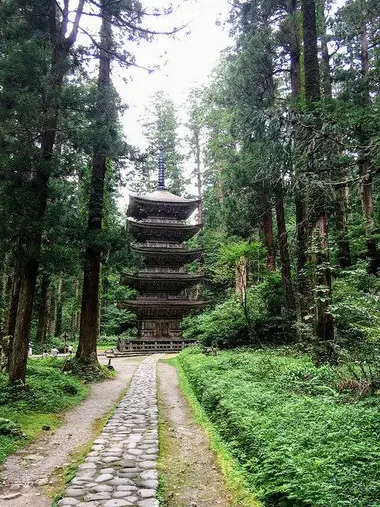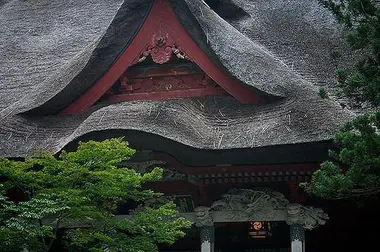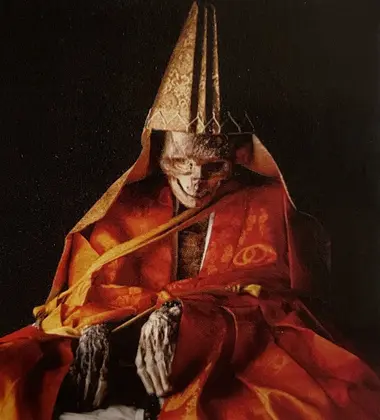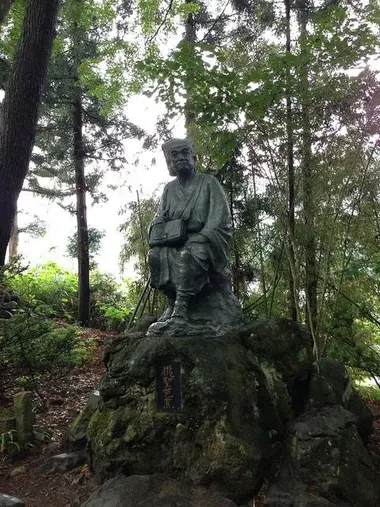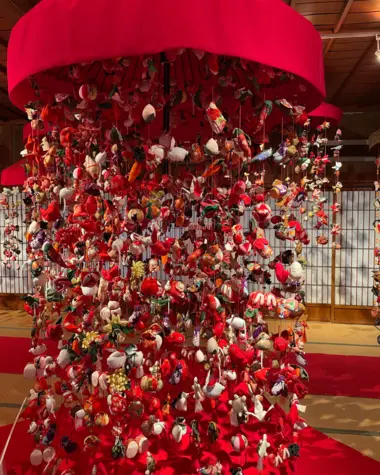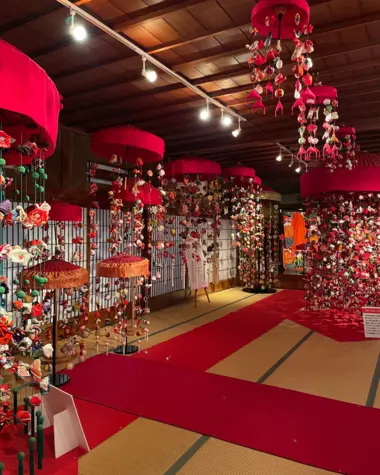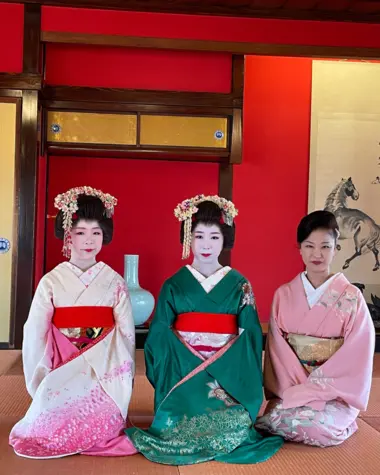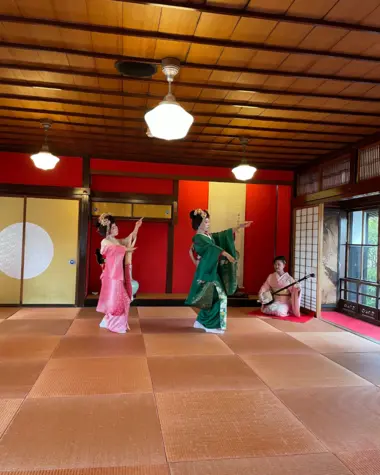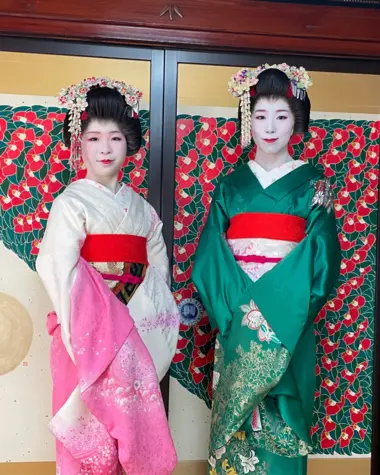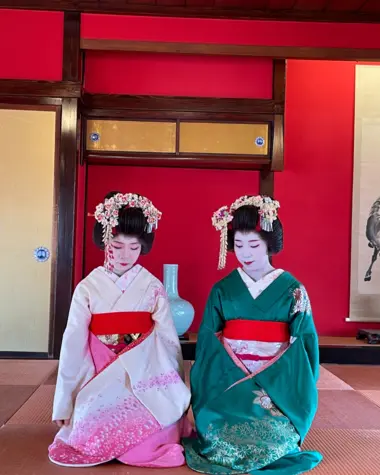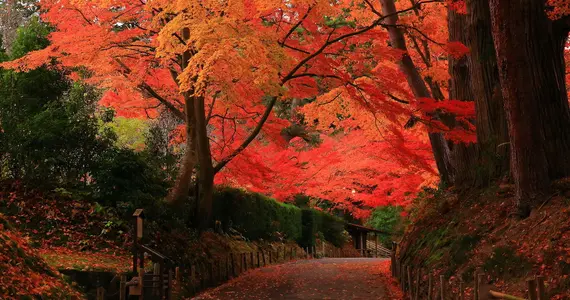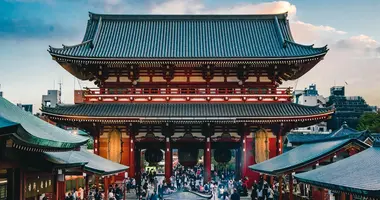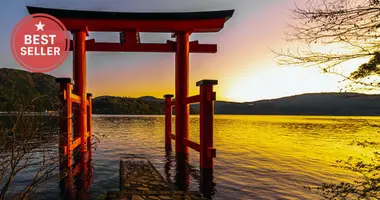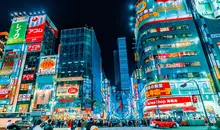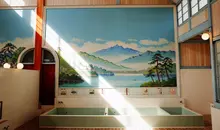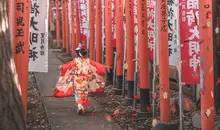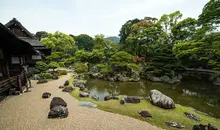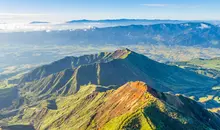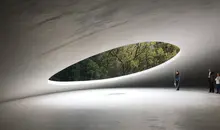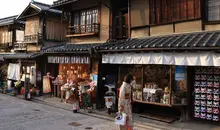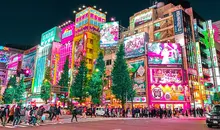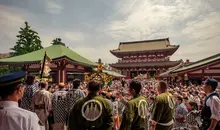Yamagata: Travel guide 山形県
- Published on : 03/04/2023
- by : Marion. E
- Youtube
Discover the prefecture's must-sees
Yamagata Prefecture is located in Tohoku, on the northwest coast of Honshu. Largely rural and agricultural, it is a verdant prefecture with numerous national parks and fruit farms. Renowned for its snowy winters, ski resorts and "snow monsters" (snow covered trees), it's also a must-see destination for its spa villages and outdoor onsen.
Rooted in tradition, the Yamagata region abounds in unique cultural activities to discover! Close-up of Yamagata prefecture.
When should you visit Yamagata Prefecture?
Winter, the key season
Yamagata Prefecture is renowned for its winter season, thanks in particular to its renowned ski resorts on Mount Zao and its mysterious Snow Monster, as well as its many hot springs with thermal properties, making it an ideal destination for winter fun. Yamagata is also the only prefecture in Japan where onsens can be found in every town.
With heavy snowfall in winter, Yamagata is one of the snowiest regions in the world! So it's best to visit in February rather than January.
Charming during every part of the year
Yamagata Prefecture is also very pleasant during the other seasons too. Visitors can admire the many cherry blossoms that bloom in spring and the maple leaves that adorn the region in red during the momiji season. A wide range of cultural, sporting and leisure activities are available throughout the prefecture. All year round, its national parks are also the perfect destination for nature hikes.
How to get there from Tokyo?
- By Shinkansen : From Tokyo Station, take the Yamagata train to Yamagata station
Journey time: 2h40 - By plane: Local airlines ANA or JAL offer flights to Yamagata airport:
Duration: Approx. 50 minutes from Haneda airport
What to do in Yamagata
Relax in an onsen
For visitors in search of relaxation, Yamagata Prefecture is a destination of choice. Renowned for its hot springs with waters rich in sulfuric acid, it offers an open-air bathing experience in the very heart of the surrounding nature. Yamagata is the place for you!
Discover our selection of top destinations to enjoy the region.
Ginzan Onsen
Ginzan Onsen is one of Japan's oldest and most renowned spa villages. Since the 1920s (Taisho era), it has been a much-appreciated time capsule for visitors who come here to recharge their batteries. At the village gates, a free open-air ashiyu - foot bath- immediately sets the mood. Locals and tourists alike have their own ritual: a stop at the tofu store Nogawa Tofuya across the street and enjoy it while lounging in the ashiyu.
The architecture of Ginzan Onsen immerses us in a historic setting, with its single main street, cobbled alleyways, old traditional inns -ryokan- and the river that divides the village in two. At its far end, Shirogane Park and the Shirogane-no-taki waterfall are still little-known spots for foreign visitors, but are not to be missed.
Pleasant in any season, Ginzan Onsen takes on a magical quality in winter when it's covered in snow, or during the sakura flowering season, with its pretty pink hue. For a gourmet stopover, we recommend the delicious soba restaurant Izu no Hana where you can enjoy a magnificent view of the city.
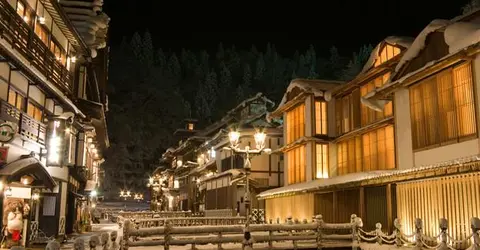
Ginzan onsen by night
Photozou
Zao Onsen
Further south in the prefecture, the village of Zao Onsen is also a must-see, between winter sports and thermal relaxation, especially during the winter season. Particularly renowned for its ski slopes and its famous Snow Monster when the surrounding trees are covered in snow, Zao Onsen attracts hundreds of thousands of visitors every year. The village lies at the foot of Mount Zao, a still-active volcano rising to an altitude of 1,800 metres and covered in dense forests.
Zao Onsen is also a spa town and home to the country's second oldest onsen, said to have been discovered some 1,900 years ago: the large open-air Dairotenburo bath ! Take the time to go there and relax: surrounded by lush nature, the immersion in a misty, almost surreal setting created by the heat of the bath will be a memorable experience. Summer or winter, it's the centerpiece of the village of Zao Onsen.
Immerse yourself in historic Japan with the region's cities
Yamagata is one of Japan's historic jewels, offering visitors a unique experience with its many listed sites, cultural activities and traditional villages. Immerse yourself in the Japan of yesteryear through its landscapes and period architecture.
Among the region's most important historic sites are the ruins of Yamagata Castle, the Sanomaru. Built in the early 17th century, it was once the seat of the Mogami clan, one of the region's most famous samurai families. Although partly destroyed during the Boshin War in 1868, the remains offer visitors a glimpse of the power and grandeur of the Japanese feudal era.
Further north, in the Tsukuoka region, the village of Kakunodate offers visitors the chance to immerse themselves in the architecturally intact setting of a samurai village. It was once home to around 80 families, and some of their period homes are open to visitors.
Discovering spirituality in the mountains
If you'd like to enjoy the prefecture's rural setting a little more, a detour to Dewa Sanzan National Park is in order, offering hikes through breathtaking scenery. At the heart of the park are the 3 Dewa mountains , considered sacred , and the famous 5-story pagoda of the Dewa Sanzan sanctuary .
Representing birth, death and rebirth respectively, this is one of Japan's oldest mountain shrines. Mount Haguro is the most popular with visitors because it's the easiest to climb. It is also the preferred destination for pilgrims on their way to the large Shinto shrine with its impressive gate. To reach the pagoda, pilgrims must follow a long stone staircase of 2,466 steps!
Please note: from summer 2023, the pagoda will be under renovation for 2 years.
Still on the path of spirituality, the Kaikoji temple is a place out of the ordinary in Japan. It's famous for its 2 Sokushinbutsu, or mummified monks. The story behind these well-preserved icons offers an unexpected glimpse into Japanese culture. To achieve enlightenment in Buddhism, monks engaged in preparations to become mummies while they were still alive! A fascinating story to discover in the town of Sakata.
Unmissable and unique things to do in Yamagata
Yamagata Prefecture is home to rare gems of culture and immersion that you won't find anywhere else. The town of Sakata offers visitors the experience of a traditional and historic Japan, immersing them in the memories of a once prosperous town, frequented by rice, textile and hina doll merchants from Kyoto.
The Maiko Tea House Somaro is one of the few places outside Kyoto where you can see maiko - apprentice geisha - perform in public. Merchants and businessmen of the time often went there to meet the Maiko.
The establishment - a traditional restaurant - is over 200 years old and even today, the maiko continue to perform there, even allowing their audiences to take photos of them. You can enjoy their performances here, or take tea or a meal of Sakata specialties that will give you a glimpse, for a moment, into the art of apprentice geisha.
Still in the town of Sakata, you'll discover the Sanno Club and take part in a kasafuku workshop . Dating back to 1895, and once an upscale restaurant, it is now an establishment that showcases the history of Sakata and where you can see an entire floor decorated with kasafuku, ornaments literally meaning "happy umbrella". These are, in fact, small traditional cloth dolls that often take the form of hanging umbrellas. An original souvenir to bring back from Japan, which has been part of traditional Japanese culture since the Edo era!
Local specialities
What are the local specialities?
Yamagata is renowned for its fresh produce and high-quality rice.
Our tip: stop off at the various markets and restaurants to sample local specialties such as Sakuraebi kakiage (pink shrimp fritters) or Kiritanpo nabe ( a rice and vegetable fondue).
Where to spend the night in Yamagata?
A ryokan, a traditional Japanese inn, is probably the ideal accommodation to make the most of what Yamagata Prefecture has to offer! We recommend
- Ryokan Takamiyazao Onsen, a 300-year-old ryokan frequented by the imperial family
Ginzanso, located in Ginzan Onsen, to enjoy hot baths right in your room.
